Suncream and insecticides
Suncream, also known as sunblock or suntan oil, defends your skin against ultraviolet radiation from the sun. 'Ultraviolet' means 'beyond violet', and describes those types of light beyond the violet colour at the end of the visible spectrum - you can't see them, but they are there, and they pack a punch.
There are about nine types of ultraviolet light, but the two we are concerned about here are long-wave ultraviolet, known as Ultraviolet A or UVA, and medium wave UV, known as UVB.
Hot objects emit ultraviolet radiation, and the sun is the hottest object around: so it sends a good deal of UV to the earth (which is a good thing: we need it for life, heat, and production of Vitamin D. But we're not going to get into that now). A lot is blocked by the earth's atmosphere. What gets through tends to be about 95% UVA and 5% UVB.
In the past, UVA wasn't considered all that dangerous (although now it's known it can produce indirect DNA damage, leading to other problems). So traditional research has focussed on stopping UVB. Overexposure to UVB causes sunburn. And skin cancer. Modern weather forecasts often include the UV index (right).
The best way to avoid over-exposure to UVB is to avoid exposure to the sun. The World Health Organisation is promoting a slogan, "If you have no shadow, look for shade." Shade is good, especially on a boat.

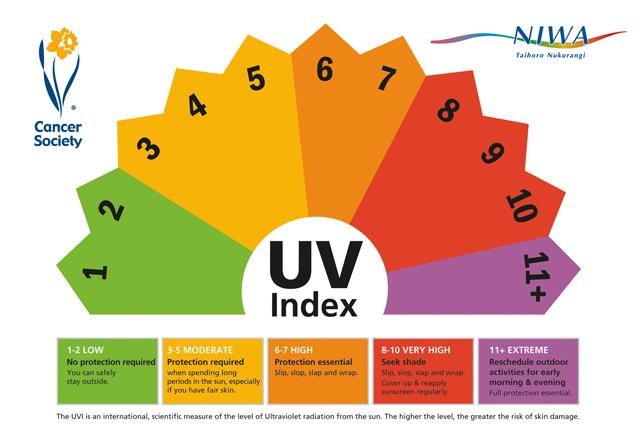

The second-best way is to wear clothes: a hat, sunglasses (UV radiation particularly attacks the eyes), a shirt, light trousers. Ideally they should have a UPF label (Ultraviolet Protection Factor - a concept standardised in Australia in 1996). In other countries, the label might say it meets ASTM International standards. That means American Society for Testing of Materials, and that means the item has been tested to reasonable UPF levels.
This rash vest of UPF 40 allows just one-fortieth of the sun's UV radiation to reach your skin. This is good protection. Australian research has shown that lycra or elastane fabrics have the best UPF, followed by nylon and polyester. You can increase the UPF of your existing clothes if you want to. Check www.skincare.org.
If you're snorkelling in hot sun, keep in the shade as much as possible, and time how long you are in sunlight. Ideally you should wear a T-shirt or rash vest. And suncream, especially on the back of your neck and the back of your legs and arms.
Which brings us to the third most effective way of preventing sunburn and skin cancer: suncream. Not all suncreams are effective: some of them are, frankly, not worth the money. In the UK, which? have tested a number of suncreams and come up with some recommended and not-recommended creams. Check which.co.uk.
They also did some really helpful research into how often we should apply sun cream and how much to use. Their photo tells the story. The hand on the left shows how much suncream we like to apply: the hands on the right how much we should be putting on. And we should be doing this every two hours.
Suncreams are classified according to SPF - Sun Protection Factor. The numbers refer to lengths of time. So, if you get sunburn in 5 minutes, and you apply SPF 30 properly, it will take 30 times 5 minutes until you get burned. SPF 10 means it will take 10 times 5 minutes.
All this assumes you put on the right amount 15 minutes before you go outside - 35 ml for your body, or about 7 teaspoons. One for your face/head/neck, one for each arm and leg, one for your front, one for your back. And reapply after two hours, or if you swim, shower, or use a towel.
From all this you will deduce that, for suncreams to work properly, you have to put on large amounts very often. That's one reason why the Australian government won't allow suncreams to claim 'all day' protection - because the cream gets rubbed off on seats, towels, or in the sea, and it needs to be reapplied.
Which suncream do we use? We don't recommend product, but people do ask. So... we use Ultrasun. But we don't believe it gives all-day protection. We limit our time in the sun.
Research by the US Parks Service has shown that benzophenone in some sun creams could be damaging coral reefs. If you'd like more information, check out tropicalsnorkeling.com. They research sun cream quite extensively.
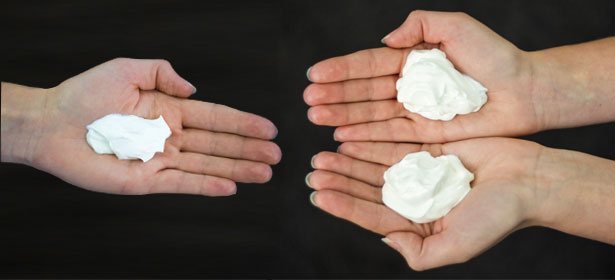
Above: you should apply the amount on the right.
Below: rash vests from boden.co.uk
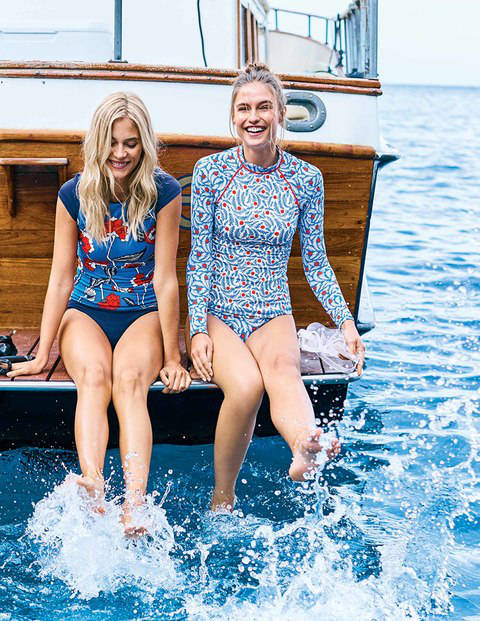


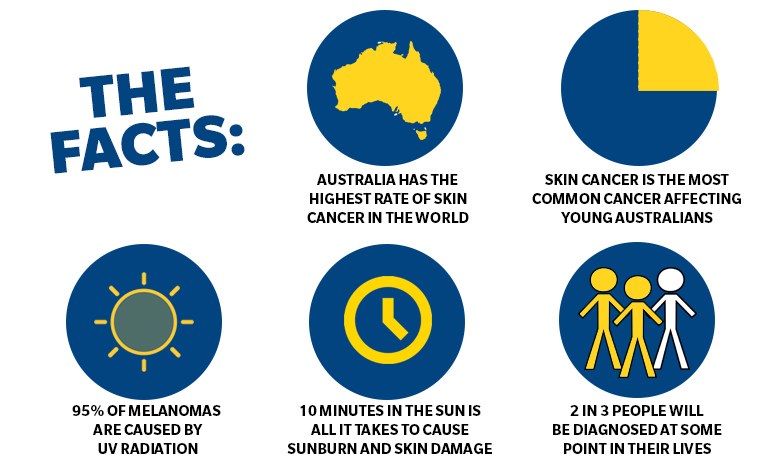
Why the Australians?
The Australians keep coming up on this page. Why are they so worried about sunburn? Well, they have always liked the outdoors, but they liked it a lot less when the hole in the ozone layer was discovered in the 1980s. It centred on Antarctica, but reached over large parts of Australia. Ozone in the stratosphere used to form a vital protection against UVB; now it was disappearing..
The Montreal Protocol of 1987 banned the use of ozone-killing chemicals such as CFCs, but they will hang around in the atmosphere for decades, destroying ozone until the 22nd century. In September 2011, the Antarctic ozone hole was 10 million square miles in area. This affects large parts of Australia.
Australians have the highest rate of skin cancer in the world - two-thirds of all Ozzies will have been diagnosed with some form of skin cancer by the age of 70 - so the Australian government, and the Australian people, take sun protection very seriously. If they don't, it might kill them.
Almost by accident, they became world leaders in sun protection. Slip on a shirt! Slop on some cream! Slap on a hat! has now evolved into Slip Slop Slap Seek Slide! The campaign is aimed at young people, teachers, parents - and water sports enthusiasts. Sunburn can be uncomfortable and inconvenient. It can also, unfortunately, be fatal.
Insecticides
You should look up the UK Foreign Office website for health warnings before you travel: and also check with your GP six to four weeks before your departure date - it will give them time to order any medication you might need.
When you get to the country, health protection is up to you. Most warnings are given about bites by mosquitoes. We tend not to worry too much about mosquitoes in the UK, as they are not such a big problem. That's not the case in other countries. A World Health Organisation report states that there were 216 million cases of malaria in 2016, with 445,000 deaths. One of them could have been you, if you had travelled to the wrong country and not taken precautions. 1,500 British tourists returned home with malaria in 2014. Three died.
Mosquitoes have been around for 30 million years, and have perfected the art of hunting. They detect chemical emissions from 30 metres away - carbon dioxide in your breath, sweat, lactic acid. Mosquitoes prefer some people to others (when some people say, "Mosquitoes really seem to like me", they're telling the truth). They have excellent vision - if you're wearing clothes that contrast with the background and you move, they'll see you - and they have heat detectors too, for picking up warm-blooded mammals. They like it when you've been sweating: and they like biting on feet and ankles.
When a mosquito lands on you, she will insert a kind of needle under your skin, and hunt around for a vein. If she can't find one, she'll try again, wiggling the needle a bit more, and enlarging the wound. This is why some mosquito bites are bigger than others. When she leaves, a little bit of saliva remains - that's the itch - and, if you're unlucky, a small parasite or other infection.
The trouble with mosquitoes is not just that they are irritating: they can transmit serious diseases.
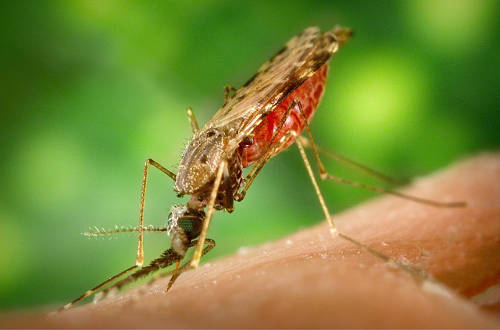
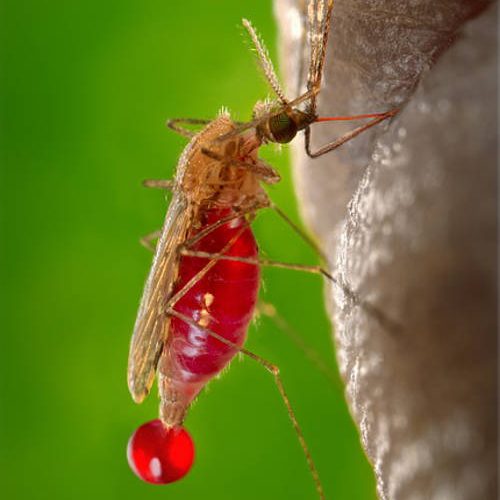
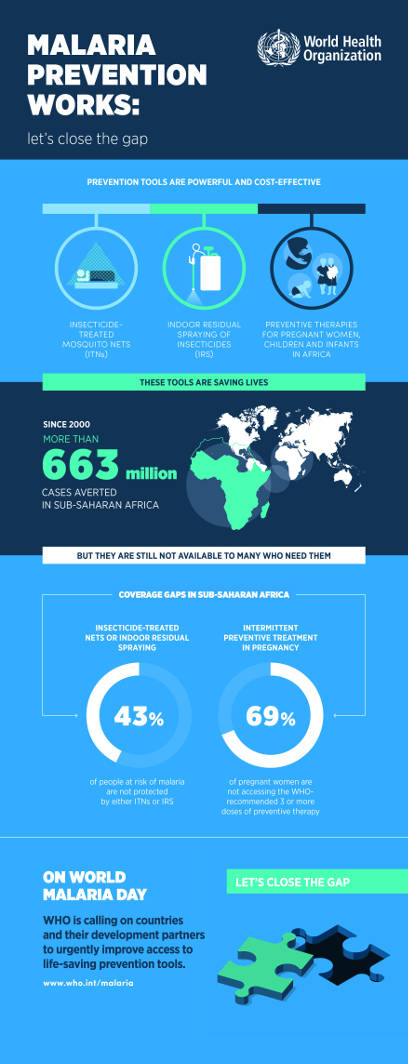
Malaria
There are 2,700 species of mosquito, divided broadly into three classes. Malaria is caused by the infected Anopheles Mosquito. We'll call her Anna (only female mosquitoes bite). Anna hatches out of eggs that are laid on calm water (stagnant ponds, puddles, edges of lakes), becomes an adult, and mates. Each time she lays her eggs, she needs protein to sustain them: that's blood from mammals.
As mentioned before, she sticks a needle into your skin and draws blood. Unfortunately, she can leave a parasite behind that produces symptoms some time after the bite - it could be six days or several months, but is frequently 10 to 15 days. Symptoms include fever, headache and chills. Malaria can be treated, but treatment needs to be quick, or it can be fatal.
Prevention
Although half the world is at risk from malaria, 90% of cases occur in Africa, with 80% being in fifteen sub-Saharan countries (and India). So, be aware of whether your destination is a high-risk country. Check this WHO link.
You can get anti-malaria drugs that will reduce your chance of infection by 90%, but this needs forward planning - sometimes you have to take the tablets for four weeks before departure. This NHS website gives a good summary.
Have we taken these drugs? Yes, we have, in Zanzibar and Mauritius. They were easy to take and we would take them again if we went into a high-risk area.
A lot of countries spray inside houses - that works - but good sleeping nets treated with repellent materials are also commonly used. Anna hunts at dusk and at night. Citronella candles work. UV lights (bug-zappers) and ultrasonic devices are not effective.
For snorkellers, and other people who are mobile and outside, you need a good insecticide or insect repellent. DEET is still recommended (see below).
Dengue fever
Not found in the UK, this occurs in southeast Asia, the Caribbean, South and Central America, and several other places. 80% of people don't have serious symptoms, but it can be difficult and painful for the other 20%. If you get symptoms on your return, contact the health authorities. See nhs.uk.
Dengue fever is spread by the Aedes Aegypti Mosquito - we'll call her Ada - who hunts from dawn to dusk. Best way of avoiding dengue fever? Don't get bitten. There are no known cures, you just have to wait for it to go away.
Zika virus
Also spread by Ada, which means protection needed during the day. Zika virus doesn't affect most people much, but it can have serious effects, particularly on new-born babies. If you're female and thinking of having a baby, don't go to a Zika area. The NHS have produced a useful A to Z list of countries so you can check it the risk of your destination. They tend to be in Africa, the Americas, Asia and the Pacific.
Yellow fever
Another nasty mosquito-borne illness, specific to certain areas in Africa and South America. Check the Yellow Fever map. Again, a lot of people will have mild symptoms, but the serious ones can be very serious. Good news is you can get life-time protection with one inoculation costing about £80. If you don't, you won't be allowed into certain countries if you've been to a yellow-fever zone. Also transmitted by day-time mosquitoes.
If you're going to a yellow fever area, you should get inoculated at least ten days before departure. The vaccination is not recommended for infants under six months, pregnant women or breastfeeding mothers - or people over 60 (you will be able to get the inoculation, but it will take some discussion).
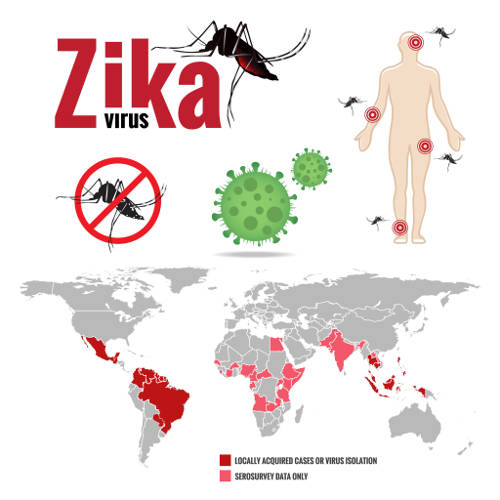
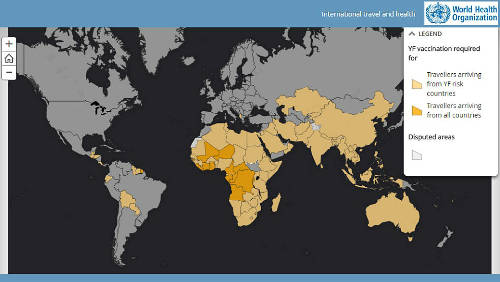
So, to summarise:
If you visit interesting parts of the world, there's a chance you might pick up an interesting disease: and quite a lot of these are transmitted by mosquitoes. There's no need to get paranoid or obsessive about this. It's a risk. Snorkelling is all about assessing risk.
You can take care of the night-time mosquitoes by keeping your windows closed and spraying the room. That's what we do. Other people use citronella candles or mosquito spirals. Treated mosquito nets, properly set up, are good. UV zappers and ultrasonic devices apparently don't work. Anti-malaria medicines can be helpful, if you buy them a month before you leave. But don't buy local drugs: there is a huge market in fake anti-malaria medicines.
The next section goes back to snorkelling - how can you protect yourself during the day, or when you're on the water? The answer is - get yourself a good insect repellent.
DEET
DEET is the acronym for a chemical with a very long name that is usually shortened to diethyltoluamide. It was developed in 1944 for use in the war, and entered military use in 1946 and civilian use in 1957.
It has been used for a long time, and is still regarded as one of the best insect repellents. It doesn't kill mosquitoes (and ticks and gnats): it repels them. We're not totally sure how. Evidence suggests that they actively dislike the smell.
DEET is sold in varying concentrations, from 10% to 100%. These percentages don't refer to strength, but to the amount of time they will last. 20% to 30% DEET will protect you for 3 to 6 hours; 100% DEET protects for up to 12 hours. The longer-lasting protection is the reason why higher concentrations are recommended for mosquito-risk areas in the tropics.
It is, however, strong stuff. It can dissolve plastic, rayon, other synthetic materials, and nail varnish. You shouldn't put it on under clothes, or on open cuts and wounds, eyes or mouth. And you should only use lower concentrations on children.
Because it's been around such a long time, question marks have occasionally been raised about its safety: but it still has a clean bill of health, and is regarded as one of the best repellents around. Having said that, everyone is different, and some people may get a reaction from it. So test it before you use it extensively.
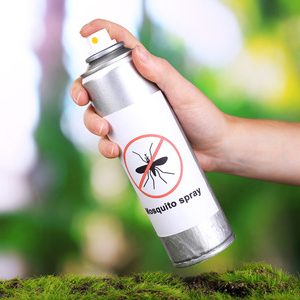
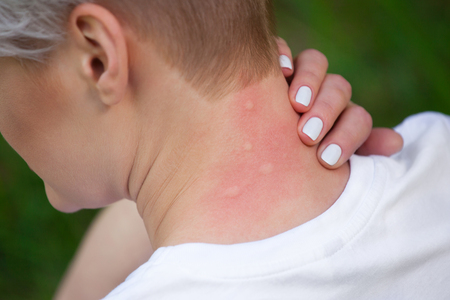
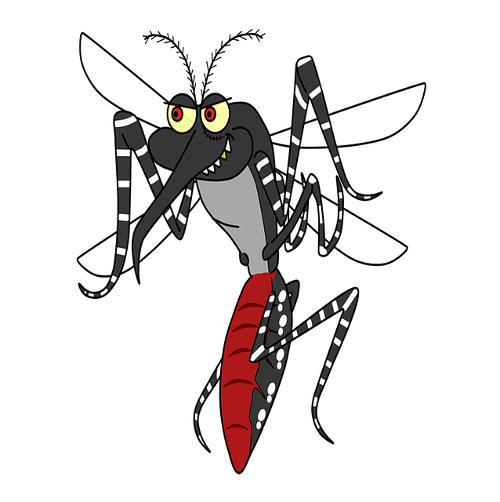
It's usually sold as a spray, but you need to be careful to cover all exposed parts. If you leave a piece the size of a large coin, that's enough for a mosquito. You don't gain anything by slathering it on: an even covering will do. And put it on after suncream, thirty minutes afterwards if possible.
Research by the New England Journal of Medicine in 2002 found that DEET was easily the most efficient repellent - but that you don't gain much once the concentrations go over 50%. So, if you are going to a mosquito-risk zone, get 50% DEET for you, 20 - 30% for your kids (and remember that their protection doesn't last as long as yours) and don't put it on babies. And keep it away from your iPad cover.
We use Lifesystems Expedition 50+ DEET. It's not a recommendation - it's just what we use. And we wrap it up very carefully in the suitcase.
Another substance has arrived relatively recently - picaridin. We don't know much about it, but outdoors.org did some research that you might like to look at.
You should think about clothing while you're planning your trip - ideally, long trousers tucked into socks, and long-sleeved shirts. Especially when you sit out in the evening.
Most people don't like doing that, but you could look at Nosilife, a range of clothing that claims to weave the insecticide permethrin into its products. They claim 90% protection against insects. It's difficult to find scientific verification of this, but we bought a couple of shirts and trousers anyway. They seem OK.
And ... think about colours. Mosquitoes will more easily see bright clothes that stand out from the background. So, pastels, earth colours and drab olive tones might be helpful.


Usual warning: we have made every effort to make sure this information is correct and up-to-date, but you need to check it all yourself.
© Garreg Lwyd Ltd 2018
